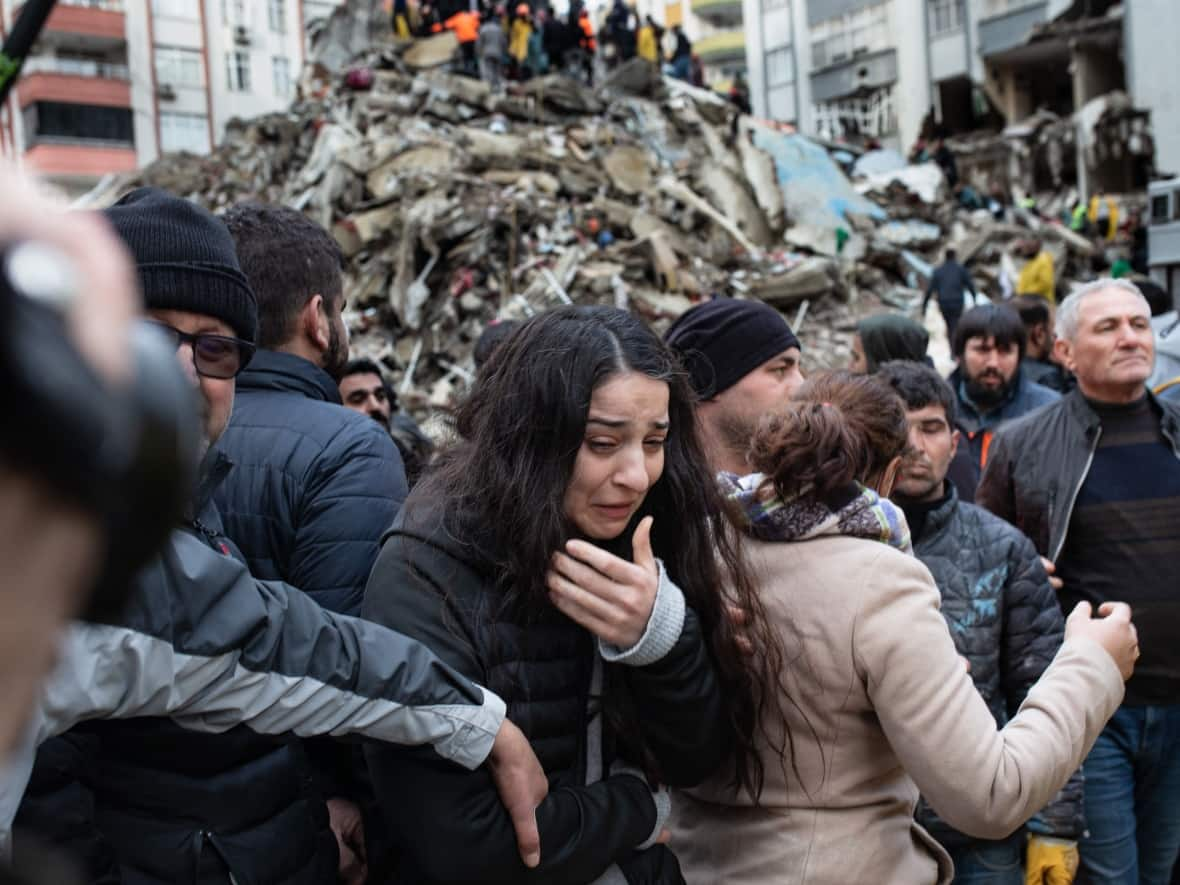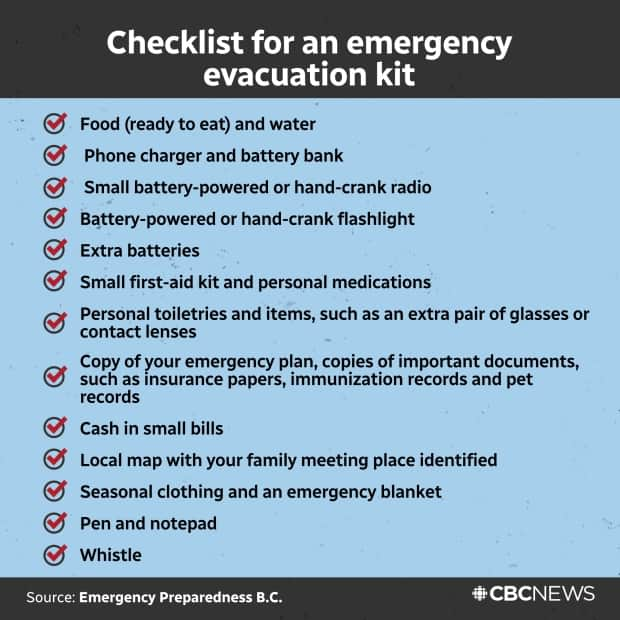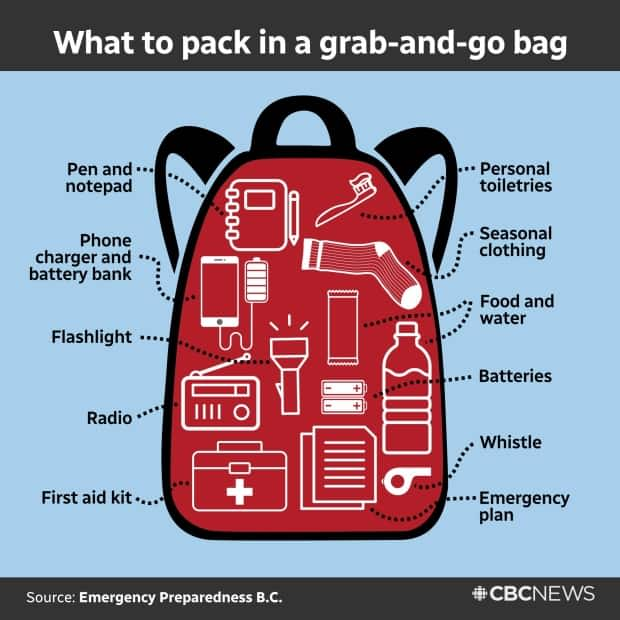Earthquake in Turkey underscores risks and responsibilities for British Columbians

The devastating earthquake and aftershocks that rocked southeastern Turkey and northern Syria Monday has, for many, underlined the risks and dangers of a major earthquake hitting British Columbia.
The 7.8-magnitude earthquake toppled hundreds of buildings and killed thousands of people, the toll expected to rise as rescue workers search mounds of wreckage in cities and towns across the area.
Turkey sits on top of two major fault lines and frequently experiences earthquakes, although Monday's was one of the biggest in at least a century.
CBC seismologist Johanna Wagstaffe says Monday's massive quake happened after two tectonic plates became locked.
"That's an area of the world where we have seismic gaps," said Wagstaffe. "Basically, where we know we have locked sections of big faults that are waiting to go."
Earthquake
She says there are similarities and differences in the type of earthquakes that struck Turkey and northern Syria — and the type expected to hit British Columbia.
"It's the fact that we, too, are in this seismic gap," Wagstaffe explained. "The Cascadia subduction zone off the coast of Vancouver Island is an area where two plates have become locked."
The Cascadia subduction zone is a 1,000-kilometre fault that runs from northern Vancouver Island to northern California. The fault itself is a boundary between two tectonic plates: the Juan de Fuca and the North American plate.
The Juan de Fuca tectonic plate is being forced underneath the North American plate. The energy from that movement is being stored up inside the rocks, waiting for the moment it will be released as a catastrophic megathrust earthquake — also known as "The Big One."
Turkey's earthquake was due to a transform fault, or side-to-side quake, where two tectonic plates slide past each other horizontally.
LISTEN | Fault Lines, a CBC original podcast, explores the potentially devastating effects of a massive magnitude earthquake predicted to hit the West Coast of North America.
CBC Listen | Spotify | Apple Podcasts
Vulnerable structures
The epicentre of Monday's quake was near Gaziantep, a major city and provincial capital in Turkey. The affected regions were also home to vulnerable buildings, according to a U.S. Geological Survey structural engineer.
While new buildings in cities like Istanbul were designed with modern earthquake standards in mind, this area of southern Turkey has many older highrise buildings. Rapid construction in Syria — plus years of war — may have also left structures vulnerable, researchers said.
B.C. better able to respond
Wagstaffe says B.C. would be better able to respond to a tragic event like the earthquake in Turkey because of Canada's higher building code standards.
"We have some of the best building codes in the world, and we are figuring out all the time better ways to respond to disasters. Already, we are so much further ahead than a place like southern Turkey."
An emergency planner with the City of Vancouver says Turkey's earthquake should serve as a wake-up call for everyone in B.C.
"That can definitely happen in Vancouver, and we are overdue for it," said Jackie Kloosterboer.

Earthquakes are common in British Columbia, with an average of 3,000 reported each year, according to Prepared B.C.
Most are too small to be felt, but earthquakes strong enough to cause structural damage happen, on average, once per decade.
The most at-risk regions of British Columbia are along the west coast, where the threat of a tsunami is also real.
"It's going to have a huge impact when something like the earthquake in Turkey happens here," said Kloosterboer.
"Something we need to do on an annual basis is to check our supplies, make sure we have what we need."

Emergency kit essentials
Prepared B.C. has created an earthquake and tsunami guide that explains in detail the steps British Columbians should take to become better prepared for emergencies, including a family emergency plan template and a list of emergency kit items.
"Think of the different times of year when this might happen and what we would need to get through an earthquake in the middle of an atmospheric river or a snow event or a heat dome," said Wagstaffe.
"It's the layering of disasters that can make them worse."


